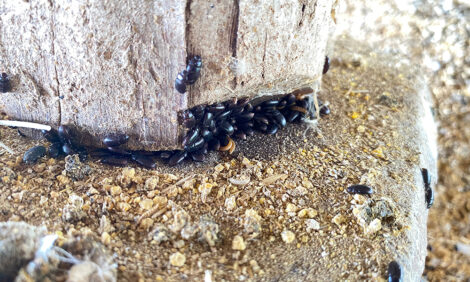



IEC Participants Look at Industry Developments in North America
More than 370 participants from 36 countries attended the International Egg Commission's Annual Meeting in Shanghai last month. Respected and long-time contributor from the poultry industry, Terry Evans, has selected the highlights of the reports from the US, Canada and Mexico specially for ThePoultrySite.Canada
Regarding avian influenza, the Canadian industry is working to convince the federal government to provide fair and adequate compensation for producers if flocks have to be destroyed or depopulated.
Egg Farmers of Canada is monitoring the on-going World Trade Organisation negotiations as a new World Trade Organization (WTO) deal could undermine their supply-management system.
Proposed amendments to the Criminal Code could impact on agricultural practices including egg farming, as animal welfare activists are pushing an agenda to criminalise egg industry practices. They are also targeting municipalities, campuses, the food service sectors and retailers, telling them not to purchase eggs from hens raised in cages. The industry is working hard to get the facts about egg production into the hands of these sectors. It is also monitoring the evolution of Canada's Animal Cruelty legislation to make sure that the new laws do not adversely affect people who make their living from agriculture.
Traceability programmes are also being reviewed and efforts are underway to establish a national traceability system.
The Federal government has recognised the supply-management scheme as a business risk management programme, which has brought additional stability to the industry.
USA
America's egg industry is continuing to consolidate. There are now approximately 200 companies with an average flock size of one million layers on a single site. The top 60 companies represent 85% of all eggs produced.
The top 10 US food retailers sell about 75% of all food.
The industry is under attack from the animal welfare activists. The Humane Society of the USA, the leading activist organisation, has an annual budget of US$140 million, and their number one mission is to eliminate veal and pig crates and cages for layers. At the time of the presidential election on 4 November, voters in California will also vote on whether or not to ban cages in that State.
Neither the Democratic or Republican representatives at the Presidential election are considered to be pro-agriculture.
Producers are coping with historically high input costs. A break-even price of 70 cents per dozen two years ago was now more than one dollar.
Chick placings have been higher in 15 of the last 19 months but this may have been offset to some extent by less moulting.
Environmental regulations for both air and water are continuing to keep the industry busy and the likelihood will be, regardless of who is elected President, that the industry will be subjected to more environmental legislation in the future. The industry is looking at ways of lowering ammonia emissions from farms.
A strategic conference was going to be held late November so that, whoever won the election, the industry had a plan for the future.
Mexico
Sanitary problems posed one of the most important challenges. The industry is working to harmonise sanitary controls in Mexico and with neighbouring countries. Food safety is also important and embraces a range of concerns including antibiotics and hormones that could harm consumers.
While Mexico had some world-class large facilities, there are many farms that are being run as they were 30-40 years ago. Only 6-7% of production goes for processing but the industry is working to persuade potential customers to use products instead of shell eggs.
While the rise in grain prices has hit the industry, egg prices have been good in the past few years.
Despite growing much maize and sorghum, Mexico imports 50% of its grain requirements from the USA. The industry has to work with government to improve its infrastructure, with storage facilities in particular needing to be improved.
A better balance between egg supply and demand is needed to be able to feed a human population of 100 million, which requires to be further convinced of the great value of eggs. Nevertheless, per-capita consumption is already the highest in the world at nearly one egg a day.
Small quantities of egg products are exported but they need to turn Mexico into a major egg exporting country.
While they are aware of animal welfare issues, these were currently not a concern for consumers.
Further Reading
| - | You can view other reports from the IEC Annual Meeting 2008 by clicking here. |
October 2008











